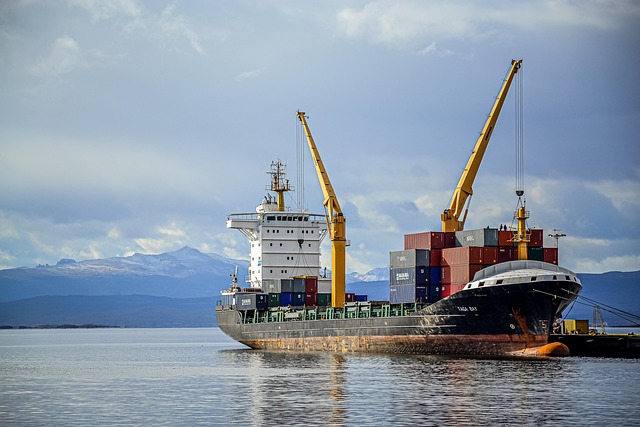Ventilated shipping containers transform perishable goods transport with temperature/humidity control, enhancing quality & safety. Advanced cold chain logistics and versatile container types (storage, sea, refrigerated) offer flexible, efficient shipping solutions. Strategic ventilation preserves freshness in food, pharmaceuticals, maintaining ideal conditions to global markets.
Ventilated shipping containers are transforming the logistics landscape by preserving perishable goods during transit. In today’s globalized world, ensuring cargo freshness is paramount for food safety and economic viability. This article delves into the innovative solution of ventilated shipping containers, exploring how they maintain optimal conditions, enhance product quality, and minimize waste. We’ll cover everything from the technology behind these containers to best practices for maximizing their benefits, all while highlighting the significant advantages they offer over traditional methods.
- Ventilated Shipping Containers: A Modern Solution
- Preserving Perishable Goods During Transit
- How Ventilation Enhances Cargo Freshness
- Benefits of Using Ventilated Containers
- Best Practices for Optimal Cargo Preservation
Ventilated Shipping Containers: A Modern Solution

Ventilated shipping containers have emerged as a modern solution for preserving perishable cargo freshness during transport and storage. Unlike traditional freight containers that offer limited airflow, these innovative modular units are designed with specific ventilations to control temperature and humidity effectively. This feature is particularly crucial for time-sensitive items like fresh produce, pharmaceuticals, and seafood, which require constant monitoring to maintain their quality and safety.
By integrating advanced cooling systems with optimized container shipping practices, ventilated shipping containers ensure a seamless transition from one stage of the supply chain to another. Whether it’s a refrigerated container for sea transport or an ISO container heading to a local depot, this technology guarantees that perishable goods arrive at their destination in prime condition. The versatility of these containers, accommodating various dimensions and capacity needs, further enhances their value across different sectors and applications.
Preserving Perishable Goods During Transit

In the world of international trade, preserving perishable goods during transit is a significant challenge. Shipping containers, specifically refrigerated containers or cold chain logistics solutions, play a pivotal role in maintaining cargo freshness. These innovative freight containers are designed to regulate temperature and humidity, creating an optimal environment for time-sensitive products like food, pharmaceuticals, and flowers. By employing advanced technologies such as insulation, cooling systems, and climate control mechanisms, cargo containers ensure that goods arrive at their destination in prime condition, minimizing spoilage and waste.
The versatility of intermodal containers, including storage containers, sea containers, ISO containers, flat rack containers, open top containers, high cube containers, and more, allows for flexible and efficient container shipping and container transport. Whether it’s a modular container for temporary storage or a refrigerated sea container for long-distance voyages, these solutions cater to diverse needs. Container leasing and container rental services further enhance accessibility, enabling businesses to optimize their supply chain without significant upfront investments in container dimensions and container capacity.
How Ventilation Enhances Cargo Freshness

Ventilation plays a pivotal role in maintaining the freshness and quality of perishable cargo within shipping containers. By incorporating strategic air circulation systems, these containers can mimic natural conditions, slowing down the spoilage process. This is especially crucial for time-sensitive goods like food, pharmaceuticals, and floral arrangements, which require consistent temperature and humidity levels to remain viable.
Effective ventilation involves controlled intake and exhaust of fresh air, often facilitated by specialized equipment within the container. This ensures a continuous flow of ambient air, preventing stagnant conditions that can breed bacteria and accelerate degradation. Furthermore, proper ventilation helps regulate internal temperatures, reducing the risk of heat-related damage and ensuring the cargo arrives at its destination in optimal condition, ready for distribution or sale.
Benefits of Using Ventilated Containers

Ventilated shipping containers offer a multitude of benefits when it comes to preserving the freshness and quality of perishable cargo. These innovative solutions are designed to regulate airflow, ensuring optimal conditions for sensitive goods during transport and storage. By incorporating specialized ventilation systems, these containers maintain specific temperature and humidity levels, preventing spoilage and extending the shelf life of products like fruits, vegetables, dairy, and seafood.
This feature sets ventilated containers apart from traditional freight or sea containers, enhancing their versatility and appeal in the container shipping industry. Their ability to accommodate a wide range of perishable goods without compromise makes them an indispensable asset for businesses involved in global trade, especially those reliant on time-sensitive deliveries and high-quality product retention. With various dimensions and capacities available, from standard ISO containers to specialized modular or refrigerated options, there’s a ventilated shipping container to suit every need in the diverse world of container transport and leasing.
Best Practices for Optimal Cargo Preservation

To ensure optimal preservation of perishable cargo within ventilated shipping containers, several best practices should be implemented. Firstly, maintain a consistent temperature range between 1-5°C (34-41°F) to slow down spoilage and degradation. This can be achieved through the use of refrigerated containers or advanced climate control systems. Secondly, monitor humidity levels closely; ideal humidity ranges between 60-70% to prevent moisture-related damage. Regular checks and adjustments using hygrometers are essential.
Additionally, proper ventilation is paramount. Ensure adequate airflow by keeping vents open during transit and using modular container designs with enhanced ventilation systems. Preventative measures like packaging perishable items in suitable shipping crates and utilizing high cube containers for better capacity and reduced crowding are also recommended. Leverage container leasing or rental services to access the required specialized equipment, such as refrigerated sea containers or flat rack containers, tailored to specific freight needs.
Ventilated shipping containers have emerged as a game-changer in the logistics industry, offering an innovative solution for preserving perishable cargo freshness. By incorporating advanced ventilation systems, these containers ensure optimal conditions during transit, extending the shelf life of sensitive goods. This modern approach not only benefits businesses but also guarantees consumers access to fresh, high-quality products. Embracing this technology is a step towards revolutionizing the way we transport perishable items, creating a more efficient and sustainable supply chain.
